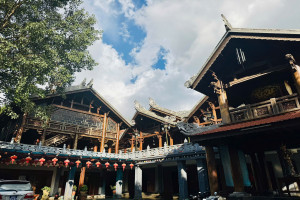
A new joint committee has been formed by various Buddhist organizations and the Cultural Heritage Administration of Korea to oversee the recognition by UNESCO of South Korean mountain Buddhist temples as World Heritage Sites until June 2018.
The initiative to push for UNESCO recognition was taken in 2011 by The Korea Brand Association. The Cultural Heritage Administration of Korea initially selected only seven traditional temples out of 45 to be registered on UNESCO’s tentative list in 2013.
Mahayana Buddhism is practiced by around 29 per cent of South Korea’s population, and the country is home to some of the most spectacular mountain Buddhist temples in the world. In a 2012 CNN report, Cin Woo Lee stated that out of 20,000 Buddhist temples in South Korea, around 900 are built in traditional style. Lee further reported that many of these traditional temples are centuries old, and a visit to them can be a humbling, calming, or uplifting experience.
These ancient Buddhist monasteries are not only religious sites, but are also a part of the country’s cultural heritage. For example, the Buseoksa Temple in Hangul, which was built in 676, is the oldest existing wooden building in South Korea. The Beomeosa Temple, or the Temple of the Nirvana Fish, in Cheongnyong-dong, Busan, was constructed in 678 by Uisang Daisa, a renowned monk also credited with the construction of the Buseoksa Temple. Beomeosa Temple belongs to the Jogye Order, South Korea’s largest Buddhist organization. “These mountain temples truly embody the essence of Korean Buddhism, which includes elements of Indian, Chinese and Southeast Asian Buddhism, yet represent characteristics of uniquely Korean philosophies,” the director of the Cultural Affairs Department at the Jogye Order of Korean Buddhism headquarters, Venerable Hye-il, told Sohn Ji-young of The Korea Herald.
“Korean mountain temples are known for blending harmoniously with nature—the landscape, human and temple together form a stable relationship,” Kim Jin-sub, a researcher at the Cultural Affairs Department at the Jogye Order headquarters, told Sohn. Visitors to the temples imbibe a feeling of spirituality from the traditional architecture, and aesthetic beauty from the surrounding landscape.
Sohn Ji-young further reports that various pagodas, Buddha statues, paintings and artifacts are preserved within the temples’ grounds. As well as communicating with the various authorities involved in the registration process, the newly formed committee will hold academic symposia and undertake research in preparation for the on-site inspection by UNESCO, due to be conducted by 2018.
(http://enews.buddhistdoor.com)




